
A “composition” is an arrangement of the formal and informal visual elements of art within a pictorial frame. The formal elements include shape, line, form, value, colour, texture, geometry and movement. The informal (or subjective) elements refer to emotion, expression, content, creative improvisation and response.
The long, and varied tradition of landscape painting in Western art is framed by two large approaches to composition. One is the idea of the land “perfected”. Arguably the oldest aesthetic tradition in landscape painting, this form of composition re-envisioned the chaos of the earth into a rational and managed visual form. These compositional strategies were taught in the studios and academies from the Renaissance until the 19th century as the rules that made art and, in particular, beautiful and harmonious landscapes.
The idea of painting nature as it actually appeared was shunned. Landscape studies done en plein air were thought of merely as preparatory works to be discarded. Composition in this ancient tradition incorporated the rules of ideal geometric and aerial perspectives, as well as a repeated set of visual balances within the pictorial frame – for example, a grove of trees might be balanced by a hill on the opposite side of the image. The viewer’s eye might be led through the image and into the distance by a winding road or a picturesque stream. Visual focus would be created by a patch of intense light on the horizon or the bright red spot of a shepherd’s cap tending his flock of sheep. These compositional devices, influenced by nature but not controlled by it, have aided some of the finest classical painters of images of the land such as Titian, Rembrandt van Rijn and Jean-Baptiste-Camille Corot.
Denne historien er fra February 2021-utgaven av Artists & Illustrators.
Start din 7-dagers gratis prøveperiode på Magzter GOLD for å få tilgang til tusenvis av utvalgte premiumhistorier og 9000+ magasiner og aviser.
Allerede abonnent ? Logg på
Denne historien er fra February 2021-utgaven av Artists & Illustrators.
Start din 7-dagers gratis prøveperiode på Magzter GOLD for å få tilgang til tusenvis av utvalgte premiumhistorier og 9000+ magasiner og aviser.
Allerede abonnent? Logg på

Still life IN 3 HOURS
Former BP Portrait Award runner-up FELICIA FORTE guides you through a simple, structured approach to painting alla prima that tackles dark, average and light colours in turn
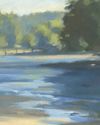
Movement in composition
Through an analysis of three masterworks, landscape painter and noted author MITCHELL ALBALA shows how you can animate landscape composition with movement
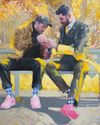
Shane Berkery
The Irish-Japanese artist talks to REBECCA BRADBURY about the innovative concepts and original colour combinations he brings to his figurative oil paintings from his Dublin garden studio
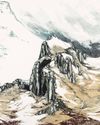
The Working Artist
Something old, something new... Our columnist LAURA BOSWELL has expert advice for balancing fresh ideas with completing half-finished work
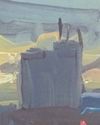
Washes AND GLAZES
Art Academy’s ROB PEPPER introduces an in-depth guide to incorporating various techniques into your next masterpiece. Artwork by STAN MILLER, CHRIS ROBINSON and MICHELE ILLING

Hands
LAURA SMITH continues her new four-part series, which encourages you to draw elements of old master paintings, and this month’s focus is on capturing hands

Vincent van Gogh
To celebrate The Courtauld’s forthcoming landmark display of the troubled Dutch master’s self-portraits, STEVE PILL looks at the stories behind 10 of the most dramatic works on display
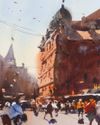
BRING THE drama
Join international watercolour maestro ALVARO CASTAGNET in London’s West End to paint a dramatic street scene
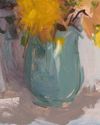
Serena Rowe
The Scottish painter tells STEVE PILL why time is precious, why emotional responses to colour are useful, and how she finds focus every day with the help of her studio wall

Bill Jacklin
Chatting over Zoom as he recovers from appendicitis, the Royal Academician tells STEVE PILL about classic scrapes in New York and his recent experiments with illustration